
Nottingham is a city and unitary authority area in Nottinghamshire, East Midlands, England. It is located 110 miles (180 km) north-west of London, 33 miles (53 km) south-east of Sheffield and 45 miles (72 km) north-east of Birmingham. Nottingham is the legendary home of Robin Hood and to the lace-making, bicycle and tobacco industries. The city is also the county town of Nottinghamshire and the settlement was granted its city charter in 1897, as part of Queen Victoria's Diamond Jubilee celebrations.

Tavistock is an ancient stannary and market town within West Devon, England. It is situated on the River Tavy from which its name derives. At the 2011 census the three electoral wards had a population of 13,028. It traces its recorded history back to at least 961 when Tavistock Abbey, whose ruins lie in the centre of the town, was founded. Its most famous son is Sir Francis Drake.
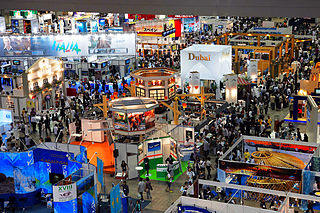
A fair is a gathering of people for a variety of entertainment or commercial activities. Fairs are typically temporary with scheduled times lasting from an afternoon to several weeks. Fairs showcase a wide range of goods, products, and services, and often include competitions, exhibitions, and educational activities. Fairs can be thematic, focusing on specific industries or interests.
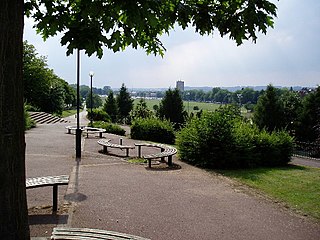
The Forest Recreation Ground is an open space and recreation ground in Nottingham, England, approximately one mile north of the city centre. This urban space is bounded by the neighbourhoods of Forest Fields to the north, Mapperley Park to the east, Arboretum to the south and Hyson Green to the west. It is best known as the site of the city's famous annual Goose Fair.

The Minnesota State Fair is the state fair of the U.S. state of Minnesota. Also known by its slogan, "The Great Minnesota Get-Together", it is the largest state fair in the United States by average daily attendance and the second-largest state fair in the United States by total attendance, trailing only the State Fair of Texas, which generally runs twice as long as the Minnesota State Fair. The state fairgrounds, adjacent the Saint Paul campus of the University of Minnesota, are in Falcon Heights, Minnesota, midway between the state's capital city of Saint Paul and the adjacent city of Roseville, near the Como Park and Saint Anthony Park neighborhoods of Saint Paul. Residents of the state and region come to the fair to be entertained, exhibit their best livestock, show off their abilities in a variety of fields including art and cooking, learn about new products and services, and eat many different types of food—often on a stick. The Minnesota State Fair was named the best state fair in the United States in 2015 by readers of USA Today.

Lenton is an area of the city of Nottingham, in the Nottingham district, in the ceremonial county of Nottinghamshire, England. Most of Lenton is situated in the electoral ward of 'Dunkirk and Lenton', with a small part in 'Wollaton East and Lenton Park'.

The Old Market Square is an open, pedestrianised city square in Nottingham, England, forming the heart of the city, and covering an area of approximately 12,000 square metres (130,000 sq ft), or about 3 acres (1.2 ha). It is one of the largest paved squares in the United Kingdom.
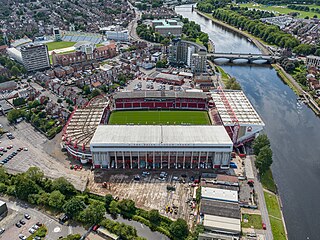
The City Ground is a football stadium in West Bridgford, Nottinghamshire, England, on the banks of the River Trent. It has been home to Nottingham Forest F.C. since 1898 and has a capacity of 30,455.
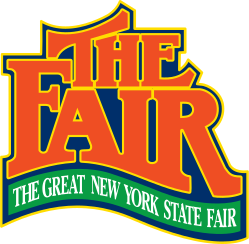
The New York State Fair, also known as the Great New York State Fair, is a 13-day showcase of agriculture, entertainment, education, and technology. With midway rides, concessionaires, exhibits, and concerts, it has become New York's largest annual event and an end-of-summer tradition for hundreds of thousands of families from all corners of the state. The first fair took place in Syracuse in 1841, and took permanent residence there in 1890. It is the oldest and one of the largest state fairs in the United States, with over one million visitors annually.

The Erie County Fair is a fair held in Hamburg in Erie County, New York, every August. Based on 2018 attendance statistics, The Erie County Fair is the second largest fair in New York and the fourth largest county fair in North America, often drawing over one million in attendance.

Markham Fair is one of Canada's oldest country fairs, an annual event established in 1844. It is located in Markham, Ontario and hosted by the Markham and East York Agricultural Society. With over 700 volunteers working on more than 70 committees, Markham Fair is the largest community-based volunteer organization in Canada. The fair and fairgrounds are owned by the agricultural society.
The Schomberg Fair is an annual agricultural fair held in late May in Schomberg, a community in the township of King in Ontario, Canada. It starts on the Thursday following Victoria Day, and runs through to Sunday. It is staged at the Schomberg Agricultural Fairgrounds, also known as the Schomberg Fairgrounds, which is adjacent to the Holland River.
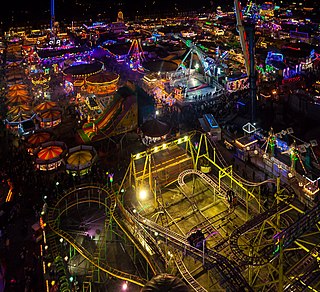
Hull Fair is Europe's largest travelling funfair, which goes to Kingston upon Hull, England for one week from 5 pm on Friday to 11 pm of the Saturday eight days later, encompassing 11 October each year. The fair is open every day between these days except Sunday. Unlike small local fairs, Hull Fair attracts rides, attractions, and travellers from a wide variety of different regions from around the country.
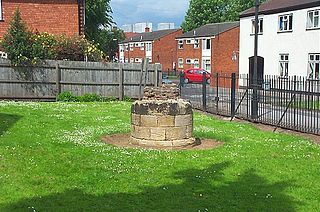
Lenton Priory was a Cluniac monastic house in Nottinghamshire, founded by William Peverel circa 1102-8. The priory was granted a large endowment of property in Nottinghamshire and Derbyshire by its founder, which became the cause of violent disagreement following its seizure by the crown and its reassignment to Lichfield Cathedral. The priory was home mostly to French monks until the late 14th century when the priory was freed from the control of its foreign mother-house. From the 13th-century the priory struggled financially and was noted for "its poverty and indebtedness". The priory was dissolved as part of King Henry VIII's Dissolution of the Monasteries.
Scottish Travellers, or the people in Scotland loosely termed Romani persons or travellers, consist of a number of diverse, unrelated communities that speak a variety of different languages and dialects that pertain to distinct customs, histories, and traditions.

The Eastern Idaho State Fair is an American state fair held annually the first week of September in Blackfoot, Idaho. It is one of three annual state fairs in Idaho; the others being the Western Idaho Fair, which is held in Boise, the state capital, and the Northern Idaho State fair, held in Coeur d’Alene. The gates to the fairgrounds open on Labor Day weekend, the first week in September.
A charter fair in England is a street fair or market which was established by Royal Charter. Many charter fairs date back to the Middle Ages, with their heyday occurring during the 13th century. Originally, most charter fairs started as street markets but since the 19th century the trading aspect has been superseded by entertainment; many charter fairs are now the venue for travelling funfairs run by showmen.
Tavistock Goose Fair, known locally as the Goosey, or Goosie, Fair, is the annual fair in the stannary town of Tavistock in the west of Devon, England. It has been held on the second Wednesday of October since 1823 and it is one of only three historically established traditional fairs in the UK to carry the name, the other being the larger Nottingham Goose Fair, and the smaller Michaelmas Goose Fayre in Colyford, also in Devon.

The Nottingham cheese riot started on 2 October 1766 at the city's Goose Fair. The riot came at a time of food shortages and rising prices in England. Violence broke out when local citizens intervened to prevent Lincolnshire merchants taking away Nottinghamshire cheeses they had bought at the fair. A warehouse, shops, and a cargo boat were looted and hundreds of cheese wheels were rolled through the streets. The army was deployed when the mayor was unable to restore control. One man was killed and others wounded as soldiers opened fire on the crowds. Order was eventually restored after some days of unrest.

The Statutes Fair is an amusements fair held in Burton upon Trent, Staffordshire in England. It is held annually on the first Monday and Tuesday after Michaelmas. The fair has been held since 1219 but, despite its name, no statute allowing for it has been found. The event was originally a hiring fair, with employers giving a symbolic shilling to employees contracted for the following year. Amusement stalls began as a means of persuading the employees to spend their shillings. The event is now entirely an amusements fair. It has survived several attempts at abolition and ran, in a reduced form, through the Second World War and COVID-19 pandemic.























